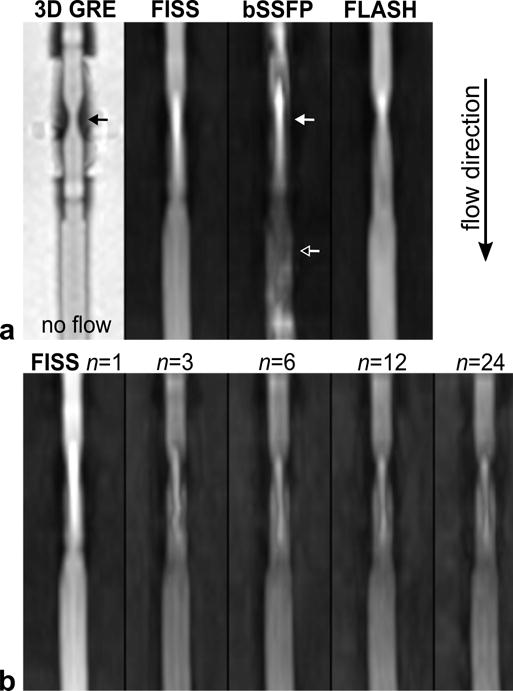Figure 6.

Signal behavior of FISS in a stenotic flow phantom. (a) Comparison of FISS, bSSFP and FLASH acquisitions during QISS-based imaging of a tubular flow phantom with a 50% diameter stenosis. Images are thin maximum intensity projections. The geometry of the stenosis (solid black arrow) is shown on a 3D gradient recalled-echo (GRE) scan. When imaging during flow (flow direction: top to bottom), the use of a FISS readout (α=60°) reduces flow artifact compared with bSSFP (α=60°) at and distal to the stenosis (solid and hollow arrows), and more closely resembles the appearance of FLASH (α=30°). Images in top panel were shown after equalizing the maximum signal intensity in each image. (b) Impact of n, the number of bSSFP repetitions per FISS module, on image quality. FISS applied with n=1 increases signal-to-noise and reduces flow artifact compared with n>1. The windowing is identical for all images.
